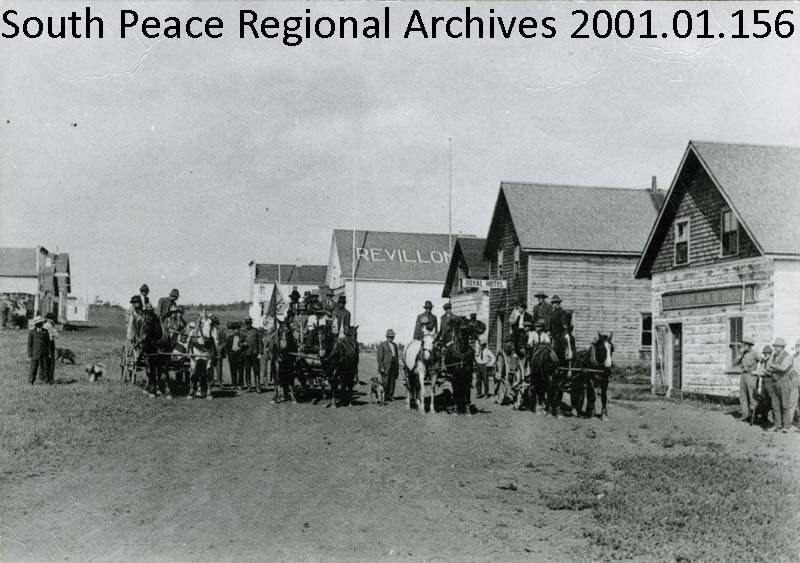At the outbreak of World War I, Canadians eagerly stepped forward to show their support for Britain. In a matter of weeks, more than 32,000 men had amassed at Valcartier, Quebec, and soon the First Contingent, CEF, was headed to England.
Some complained that the men in rural areas were not such keen volunteers, although Britain was encouraging the farmers to plant even bigger crops in order to feed both soldiers and civilians, in Britain and Canada alike . But the men of the South Peace did not shirk their military duty in any way. Hundreds of men from the area (which was quite remote at the time) joined the army, and quite a number were either killed or left with injuries and memories to haunt them.
Harold Hugh Black was born in Fergus, Ontario in 1891. Along with his brother Hubert John Black, he came to the Peace country in 1913, and they settled in Halcourt. In September of 1915, Harold, Hubert, and their neighbour Gordon Moyer walked more than forty kilometers from their homesteads to Lake Saskatoon to enlist. Out of the three men, only Harry was accepted at the time. Hubert was too slender and Gordon had flat feet (it is interesting that they were declared unfit for service, considering the distance they had just walked); however, both were drafted in the 1917 conscription.
Harry embarked for England on April 28, 1916 and arrived there on May 7. In June, he was transferred from the 66th Battalion to the 31st, and shortly thereafter landed in France. In October he was promoted to Corporal. About a year after his promotion, Corporal Black was granted leave in England, and shortly after returning to action, he sustained a gun shot wound to the scalp at Passchendaele. He remained in the hospital for twelve weeks before being discharged to duty on January 28, 1918. Harry returned to France in May and it wasn’t long before he took another bullet, this one in his right shoulder and in the midst of a valiant act that earned him a Military Medal. The citation in his battalion’s war diary reads like this:
“For conspicuous gallantry and devotion to duty at Rosieres on the morning of August 9th, 1918 – This N.C.O. utterly regardless of personal danger, rushed a machine gun post which was holding up his section, killing two of the enemy and making several prisoners. Later was wounded, not being able to reach the post he crawled up close and succeeded in dropping several bombs into the post, putting it out of action, thus allowing his platoon to move forward.”
Following this act of bravery, Corporal Black spent about five weeks in the Military Convalescent Hospital at Epsom. The war ended not long after he had recovered from the wound, but before returning home he was also briefly posted to a concentration camp in England.
Corporal Harold Black was discharged in London, Ontario on January 30, 1919. He did not arrive in Canada in good health, and as a result of having been severely gassed during the war, he took up residence at the Central Alberta Sanitarium (now Baker Park) in Calgary. Harry died in Calgary on April 10, 1923 at 31 years of age. He is buried in the family plot at Belsyde Cemetery in Fergus, Ontario.
Written & researched by Kaylee Dyck
Sources:
